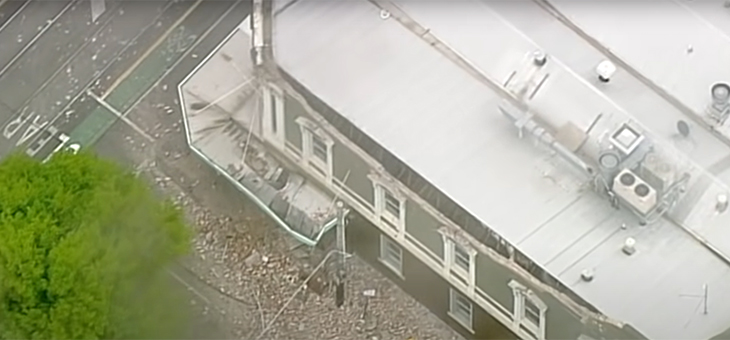My single-storey timber house started to shake, the walls wobbled and swayed and the noise built. My immediate reaction was confusion. The garbage truck has hit my house? A plane has crashed nearby? No – earthquake and I ran outside into my backyard.
The neighbourhood was full of barking dogs. When I walked around to the street, it was full of people who had poured out of their homes. All were, like me, sightly bewildered and disbelieving.
When my heart steadied, I went back inside and checked the walls, straightened the photos, made a cuppa and marvelled that my little dwelling was still standing.
Then I went to Twitter for the immediate news: some sections of the Alfred Hospital had been temporarily evacuated, phone lines were down in some suburbs, some northern suburbs lost power, there was building damage around the state and reports that the earthquake had been felt as far away as Bondi in Sydney and Tasmania. Fortunately, at the time of writing, there had been no reports of injuries.
COVID, bushfires, floods, global warming and now an earthquake in Victoria. These are unusual times.
Police reported that they had initially feared the tremor was the result of a terrorist attack.
Read: Retailers warn against last-minute Christmas shopping
Seismologists reported the quake had hit at 9.15am, registered 5.8 on the Richter scale, was quite shallow at 10 kilometres beneath the epicentre, which was near Mansfield, about 190 kilometres north-east of Melbourne. It had lasted for about 20 seconds. It was the largest earthquake ever recorded on land in Victoria.
Reports soon flowed in of similar intensity earthquakes in Japan and Chile slightly earlier and later. And aftershocks were reported in the Mansfield region, registering 5.5, 4 and 4. Geophysicists say aftershocks are unlikely to be felt in Melbourne, but advise that any objects piled precariously on shelves should be moved as aftershocks are likely to continue.
The largest earthquake recorded in Australia was a magnitude 7.2 in Meeberrie, a station about 500 kilometres north of Perth. That resulted in only a few cracked walls. But a magnitude 5.6 earthquake in Newcastle in 1989 killed 13 people and resulted in a $4 billion damage bill.
Adelaide, which is regarded as is the most earthquake prone capital in Australia, experienced a magnitude 5.4 earthquake in 1954 that caused more than $1 billion of damage in today’s money. More recently, on 15 February 2015, a 5.2 magnitude earthquake hit the region from Bundaberg to Brisbane in Queensland.
Read: Supermarket strategies that get you spending
Melbourne University geologist Professor Andy Gleadow told The Age that had the earthquake been underneath Melbourne, it could have caused serious damage.
“There is a strong association with seismicity in south-eastern Australia with the mountains … every now and again we get earthquakes but mostly much, much smaller than this,” he said.
“We only get one this sort of size every few decades.”
Solomon Buckman, senior lecturer in geology at the University of Wollongong, says earthquakes in Australia are a “particularly mysterious type”, referred to as intra-plate earthquakes. “These occur within the interior of tectonic plates rather than at plate boundaries – such as Japan, Indonesia, New Zealand, Chile and the Himalaya – where most of the world’s earthquakes occur,” he said in an article for The Conversation.
Explaining the Richter scale he wrote: “Many people don’t realise that the moment magnitude scale, or Richter scale, is a logarithmic measure of shaking amplitude. This means a magnitude 5 earthquake has a shaking amplitude 10 times that of a magnitude 4. This converts to 32 times more energy released for a one-fold increase in moment magnitude, and approximately a 1000-fold increase for a difference of 2.
“To put this in perspective, the 7.2 event in Meeberrie was 1000 times more powerful than the 5.2 event experienced in Bundaberg, while the 9.2 Great Sumatran earthquake was 1 million times more powerful.”
Read: Australia’s self-sufficiency worst in the developed world
In typical Aussie style, humour quickly surfaced, such as this quip: Vic premier Daniel Andrews has ordered hard hats to be worn inside and outside until further notice. And alcohol is not permitted while hard hats are worn.
Did you experience this earthquake? Have you ever experienced an earthquake? What was your reaction? Why not share your experiences in the comments section below?
If you enjoy our content, don’t keep it to yourself. Share our free eNews with your friends and encourage them to sign up.

